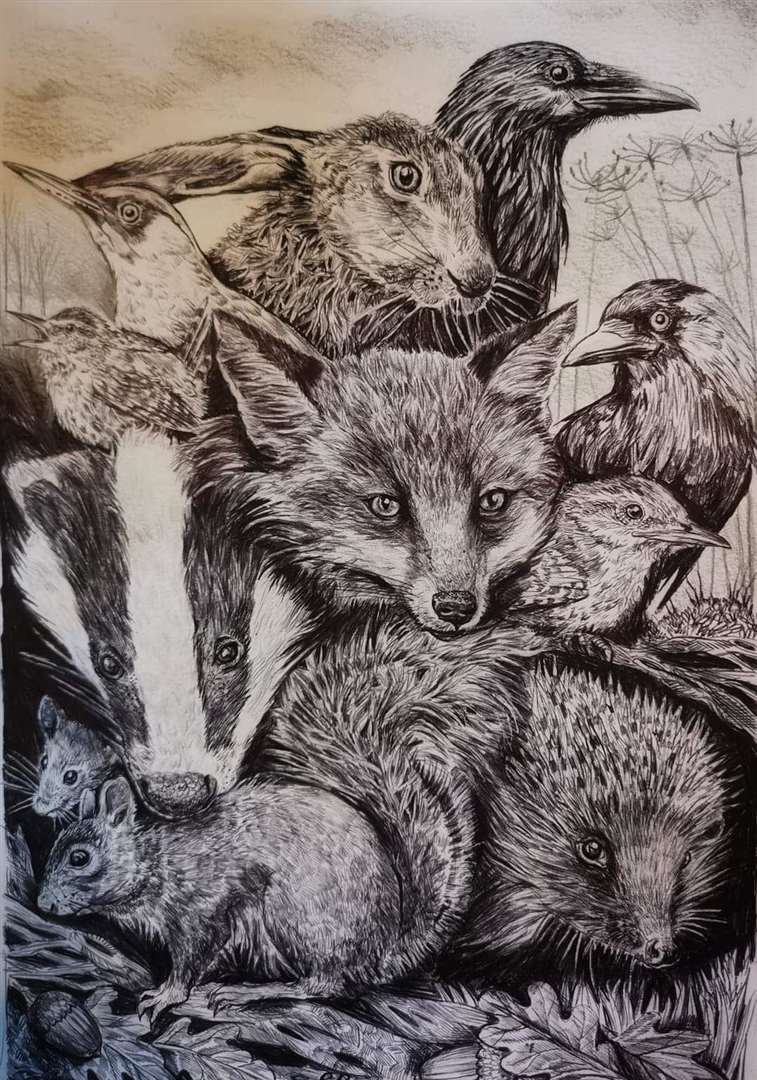Coppiced woodland
There are around 75,000 trees with undisturbed ancient woodland soils that are irreplaceable and form a unique biome.
A legacy of centuries of traditional Kentish rotational coppice management at Oaken Wood has contributed to the survival of a remarkable flora and fauna including ‘ancient woodland indicator’ wildflower species, such as bluebell and wood anemone, a host of uncommon invertebrates and legally protected bird, reptile and mammal species (including nightjar, turtle dove, viviparous lizard and dormouse).

Drawn by local artist Rachel Rodwell, inspired by this ancient woodland
Oaken Wood is designated as a ‘plantation on ancient woodland site (PAWS)’. PAWS are ancient woodland, despite what you might hear from those in favour of a further quarry expansion. This woodland has been managed for centuries as traditional rotational coppice, creating a unique and important habitat.
The Woodland Trust told us
‘Woodlands designated as PAWS are considered to be ancient woodland. Natural England and the Forestry Commission, the Government’s respective bodies for the natural environment … define ancient woodland as follows …:
“Ancient woodland takes hundreds of years to establish and is defined as an irreplaceable habitat. It is a valuable natural asset important for: wildlife (which include rare and threatened species); soils; carbon capture and storage; contributing to the seed bank and genetic diversity; recreation, health and wellbeing; cultural, historical and landscape value. It has been wooded continuously since at least 1600AD. It includes:
![]() Ancient semi-natural woodland [ASNW] mainly made up of trees and shrubs native to the site, usually arising from natural regeneration.
Ancient semi-natural woodland [ASNW] mainly made up of trees and shrubs native to the site, usually arising from natural regeneration.
![]() Plantations on ancient woodland sites – [PAWS] replanted with conifer or broadleaved trees that retain ancient woodland features, such as undisturbed soil, ground flora and fungi”
Plantations on ancient woodland sites – [PAWS] replanted with conifer or broadleaved trees that retain ancient woodland features, such as undisturbed soil, ground flora and fungi”
Both ASNW and PAWS woodland are given equal protection in government’s National Planning Policy Framework (NPPF) regardless of the woodland’s perceived condition, its size, or the features it contains.’